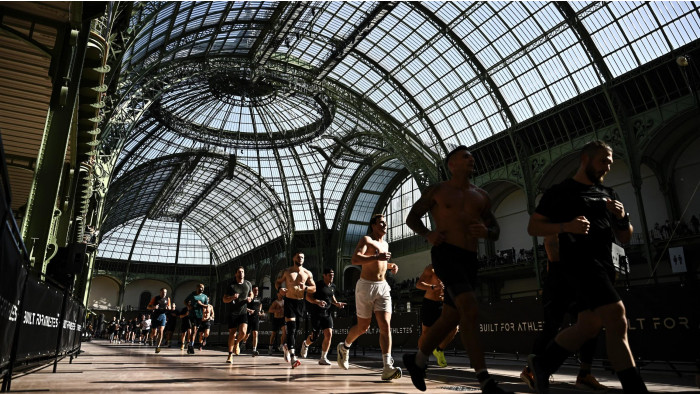The ShortRead of 24 June

Flood of Fire
Author: Amitav Ghosh
What's the story: Hankering after a bit of historical drama, ripe with political posturing and country-consuming wars? Well The Winds of Winter isn't coming any time soon - and there's another suitably epic trilogy you should be getting your eyes into.
Flood of Fire is the third and final work of Amitav Ghosh's best-selling Ibis series. Set in 1839, the latest novel is bursting with tension between China and British India following the crackdown on opium smuggling by Beijing. With no resolution in sight, the colonial government declares war. Packed with a varied cast of characters from India to China, Flood of Fire charts the outbreak of the First Opium War and China's devastating defeat, to Britain's seizure of Hong Kong.
Release date: Out now
Extract
Havildar Kesri Singh was the kind of soldier who liked to take the lead, particularly on days like this one, when his battalion was marching through a territory that had already been subdued and the advance-guard’s job was only to fly the paltan’s colours and put on their best parade-faces for the benefit of the crowds that had gathered by the roadside.
The villagers who lined the way were simple people and Kesri didn’t need to look into their eyes to know that they were staring at him in wide-eyed wonder. East India Company sepoys were an unusual sight in this remote part of Assam: to have a full paltan of the Bengal Native Infantry’s 25th Regiment – the famous ‘Pacheesi’ – marching through the rice-fields was probably as great a tamasha as most of them would witness in a year, or even a decade.
Kesri had only to look ahead to see dozens of people flocking to the roadside: farmers, old women, cowherds, children. They were racing up to watch, as if fearful of missing the show: little did they know that the spectacle would continue for hours yet.
Right behind Kesri’s horse, following on foot, was the so-called Russud Guard – the ‘foraging party’. Behind them were the camp- followers – inaccurately named, since they actually marched ahead of the troops and far exceeded them in number, there being more than two thousand of them to a mere six hundred sepoys. Their caravan was like a moving city, a long train of ox-drawn bylees carrying people of all sorts – pandits and milk-women, shopkeepers and banjara grain-sellers, even a troupe of bazar-girls. Animals too there were aplenty – noisy flocks of sheep, goats and bullocks, and a couple of elephants as well, carrying the officers’ baggage and the furniture for their mess, the tables and chairs tied on with their legs in the air, wriggling and shaking like upended beetles. There was even a travelling temple, trundling along atop a cart.
Only after all of this had passed would a rhythmic drumbeat make itself heard and a cloud of dust appear. The ground would reverberate, in time with the beat, as the first rank of sepoys came into view, ten abreast, at the head of a long, winding river of dark topees and flashing bayonets. The sight would send the villagers scurrying for cover; they would watch from the shelter of trees and bushes while the sepoys marched by, piped along by fifers and drummers.
Few were the tamashas that could compare with the spectacle of the Bengal Native Infantry on the march. Every member of the paltan was aware of this – dandia-wallahs, naach-girls, bangy- burdars, syces, mess-consummers, berry-wallahs, bhisties – but none more so than Havildar Kesri Singh, whose face served as the battalion’s figurehead when he rode at the head of the column.
It was Kesri’s belief that to put on a good show was a part of soldiering and it caused him no shame to admit that it was principally because of his looks that he was so often chosen to lead the march. He could hardly be held to blame if his years of campaigning had earned him a patchwork of scars to improve his appearance – it was not as if he had asked to be grazed by a sword in such a way as to add a pout to his lower lip; nor had he invited the cut that was etched upon the leather-dark skin of his cheek, like a finely drawn tattoo.
For more excellent reads, check out our previous choices below - just click on the link:
Solomon Creed by Simon Tyne
Finders Keepers by Stephen King
Instrumental by James Rhodes
Natural Born Heroes by Christopher McDougall
The Killing of Bobbi Lomax by Cal Moriarty
A God in Ruins by Kate Atkinson
The Wrong Girl by David Hewson
The 3rd Woman by Jonathan Freedland
Pleasantville by Attica Locke
The Road Beneath My Feet by Frank Turner
So you've been publicly shamed by Jon Ronson
The A to Z of you and me by James Hannah
Cycling Climbs by Claire Beaumont & Nigel Peake
Beyond the Horizon by Ryan Ireland
Mainlander by Will Smith
Second Life by S J Watson
Trigger Warning by Neil Gaiman
The Kind Worth Killing by Peter Swanson
The Harlem Hellfighters by Max Brooks
The Winter War by Philip Teir
The missing and the dead by Stuart MacBride
The Strange Library by Haruki Murakami
The ShortReads of 2014
(Image: Flickr/Kate Hiscock)
Latest
Related Reviews and Shortlists


The best whisky taste tested









